The Explorers sailed to Easter Island earlier, viz.
in "April 25 according to my interpretation of
the month named
Vaitu Nui in Manuscript E. And they would
return half a year later.
... On the twenty-fifth day [raa] of the
first month ('Vaitu Nui'), Ira and Makoi set sail. (i
te rua te angahuru marima raa o te vaitu nui.i
oho.mai ai a ira.ko Makoi) ... on the
first day [te raa po rae] of the month of
June ('Maro'), the bow [te ihu] of Ira's
canoe touched land again ...
[E:17]
|
"April 25 |
182 |
"October 25 |
|
115 |
298 |
... Ira, Raparenga, Uure, Nonoma, and Ringiringi
got up [he ea] and left [went to, he
oho] the 'Dark abyss [te poko uri] of
Hau Maka' (i.e., Rano Kau), arrived at Hanga Te
Pau, put the canoe into the water [he
hoa i te vaka], and sailed off to [went to,
he oho] Hiva, to Maori. Ira left [for
Hiva, for Maori, i ōho ai a Ira.ki hiva.ki
maori] on the twenty-fifth day of the month
of October ('Tangaroa Uri') ... [E:86]
The basic significance of 115 is clear - it
probably means the synodic cycle of Mercury (115
days) was due to begin anew - i.e. movement.
.jpg)
... 'I wan't a clean cup',
interrupted the Hatter: 'let's all move one
place on.' He moved as he spoke, and the
Dormouse followed him: the March Hare moved into
the Dormouse's place, and Alice rather
unwillingly took the place of the March Hare.
The Hatter was the only one who got any
advantage from the change; and Alice was a good
deal worse off than before, as the March Hare
had just upset the milk-jug into his plate
...
|
Names for Mercury: |
|
Hawaiian Islands |
Society Islands |
Tuamotus |
New Zealand |
Pukapuka |
|
Ukali
or Ukali-alii
'Following-the-chief' (i.e. the Sun)
Kawela
'Radiant' |
Ta'ero
or Ta'ero-arii
'Royal-inebriate' (referring to the
eccentric and undignified behavior
of the planet as it zigzags from one
side of the Sun to the other) |
Fatu-ngarue
'Weave-to-and-fro'
Fatu-nga-rue
'Lord of the Earthquake' |
Whiro
'Steals-off-and-hides'; also the
universal name for the 'dark of the
Moon' or the first day of the lunar
month; also the deity of sneak
thieves and rascals. |
Te
Mata-pili-loa-ki-te-la
'Star-very-close-to-the-Sun' |
|
 |
|
10 |
Ozomatli
(monkey) |
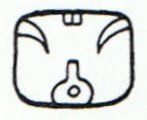 |
Chuen |
monkey |
|
11 |
Malinalli
(grass) |
 |
Eb |
broom |
|
12 |
Acatl
(reed) |
 |
Ben |
reed |
|
13 |
Ocelotl
(jaguar) |
 |
Ix |
tiger, magician |
|
14 |
Cuauhtli
(eagle) |
 |
Men |
bird, eagle |
|
15 |
Cozcacuauhtli
(buzzard) |
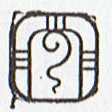 |
Cib |
owl, vulture |
|
16 |
Ollin
(movement) |
 |
Caban |
force, earth |
|
17 |
Tecpatl
(flint knife) |
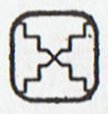 |
Etz'nab |
flint knife |
|
18 |
Quiahuitl
(rain) |
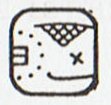 |
Cauac |
storm,
tun |
|
19 |
Xochitl
(flower) |
 |
Ahau |
lord |
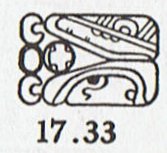
... The Maya word
cab means earth, world, tierra,
the place below, opposed to caan,
the sky. The overwhelming evidence on
the glyph and its associations in the
pictures and texts is for this same
meaning, Earth. A most interesting glyph
in this connection is one found in
Maudslay's Tikal, plate 74, glyph 13,
our form 17.33. The text on the stela
shows that this glyph indicates the
passage of one day, from 6 Eb, 0 Pop
to 7 Eb, 1 Pop; the sun or kin,
preceded by the numeral 1, is seen
entering between the caban-sign
and what we shall later come to identify
as the sky-glyph ...
... The patron of Kayab [Turtle]
is a goddess, whom Thompson (1950, pp.
116-117) regarded as the young Moon
Goddess. She is the patron of the number
one [hun - see first two glyphs
below (Coe resp. Kelley)] and of the day
Caban [cfr third glyph below]
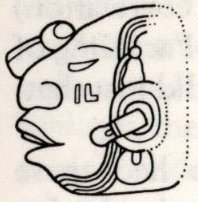
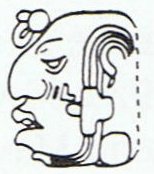
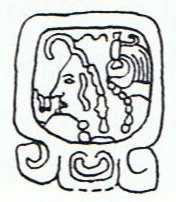
... The equivalent Aztec month,
Tecuilhuitontli, was the feast of
the death of Huxtocihuatl, a
goddess of salt ...
|
CHINESE CORRESPONDENCES |
|
Planets: |
Jupiter |
Mars |
Saturn |
Venus |
Mercury |
|
Elements: |
wood |
fire |
earth |
metal |
water |
|
Cardinal points: |
east |
south |
middle |
west |
north |
|
Sense organ: |
eye |
tongue |
mouth |
nose |
ear |
|
Taste: |
sour |
bitter |
sweet |
rank |
salty |
|
Crop: |
wheat |
beans |
hirs (Panicum) |
hemp |
hirs (Setaria) |
|
Animal: |
sheep |
hen |
ox |
dog |
pig |
|
Colour: |
bluegreen |
red |
yellow |
white |
black |
As to number 298 the meaning is less obvious.
Although we have recently found the measure 298 corresponded to the distance
from Spica to Acubens:
|
472 =
365 + 107 |
|
297 |
 |
13 |
 |
23 |
 |
 |
115 |
 |
18 |
 |
|
Gb1-24 (253) |
Gb2-12 (267) |
Gb3-1
|
Gb3-2 |
Gb6-26 (408) |
Gb7-17 (427) |
|
Febr
1 (32) |
15
(46) |
11 (435) |
March
12 |
March
21 (445) |
April
9 (99) |
|
ε
Equulei (*317) |
WEEPING |
*354 |
*355 |
|
SIRRAH |
ADHIL
(*19) |
|
ACUBENS (*135) |
|
*171 |
*172 |
8 |
ALCHITA (*183) |
SPICA
(*202) |
|
Aug 3
(215) |
17
(229) |
|
|
Sept
20 (263) |
Oct 9
(282) |
|
"Dec
22 (356) |
"Jan
5 (370) |
*313 |
*314 |
"Febr
8 (39) |
27
(58) |
|
"June 22 (173) |
"July
6 (*107) |
*130 |
*131 |
|
"Aug
10 (*142) |
"Aug
29 (*161) |
|
336
(= 4 * 84 = 7 * 48 = 12 * 28) |
29 |
|
365 |
October 9 (282) + 298 = 580 (= 20 * 29)
|
59 |
 |
520 |
 |
481 |
 |
270 |
 |
|
Ab1-1 |
Ab7-26 |
Aa5-7 |
Aa8-26 |
|
580 =
20 * 29 |
754 =
26 * 29 |
|
Viri.
1. To wind, to coil, to roll
up; he viri i te hau, to wind,
coil a string (to fasten something). 2.
To fall from a height, rolling over, to
hurl down, to fling down. Viriviri,
round, spherical (said of small
objects). Viviri te henua,
to feel dizzy (also: mimiro te henua).
Vanaga. To turn in a circle, to clew up,
to groom, to twist, to dive from a
height, to roll (kaviri).
Hakaviri, crank, to groom, to turn a
wheel, to revolve, to screw, to beat
down; kahu hakaviri, shroud.
Viriga, rolling, danger. Viriviri,
ball, round, oval, bridge, roll, summit,
shroud, to twist, to wheel round, to
wallow. Hakaviriviri, to roll, to
round; rima hakaviriviri, stroke
of the flat, fisticuff. P Pau.:
viriviri, to brail, to clew up;
koviriviri, twisting. Mgv.: viri,
to roll, to turn, to twist; viviri,
to fall to the ground again and again in
a fight. Mq.: vii, to slide, to
roll, to fall and roll. Ta.: viri,
to roll up, to clew up. Viritopa,
danger. Mgv.: Viripogi, eyes
heavy with sleep. Mq.: viipoki,
swooning, vertigo. Churchill. Viti:
vili, to pick up fallen fruit or
leaves ... In Viti virimbai has
the meaning of putting up a fence (mbai
fence); viri does not appear
independently in this use, but it is
undoubtedly homogenetic with Samoan
vili, which has a basic meaning of
going around; virikoro then
signifies the
ring-fence-that-goes-about, sc. the
moon. In the Maori, aokoro is the
cloud-fence ... Churchill 2. |
|
Mercury |
Jupiter |
Venus |
Saturn |
Sun |
Moon |
Mars |
|
1 |
2 |
3 |
4 |
5 |
6 |
7 |
|
8 |
9 |
10 |
11 |
12 |
13 |
14 |
|
15 |
16 |
17 |
18 |
19 |
20 |
21 |
|
22 |
23 |
24 |
25 |
26 |
27 |
28 |
|
Wednesday |
Thursday |
Friday |
Saturday |
Sunday |
Monday |
Tuesday |
|
29 |
30 |
31 |
32 |
33 |
34 |
35 |
and 580
- 215 (August 3) = 365.
298 = 282 + 16 suggests Acubens could have
served as a marker for the true heliacal rising
of a star 16 days earlier, viz. at right
ascension day 4 * 29½ + 1 = *119 (= 215 - 80 -
16).
 |
281 |
|
15 |
 |
|
Gb7-17 (427) |
|
Gb1-24 (253) |
|
April
9 (99) |
Jan
16 (199 + 182) |
Febr
1 (32) |
|
ADHIL
(*19 = *202 - *183) |
*301
= *119 + *182 |
ε
Equulei (*317) |
|
SPICA
(*202) |
DRUS (*119) |
ACUBENS (*135) |
|
Oct 9
(99 + 183) |
July 18 (199) |
Aug 3
(215) |
|
"Febr 27
(58) |
"Dec
6 (*260) |
"Dec
22 (356) |
|
"Aug
29 (*161) |
"June
6 (*77) |
"June 22 (173) |
Drus (Hard) is the star
χ in Argo Navis, at
the root of its mast.
.jpg)
|
.jpg)















.jpg)